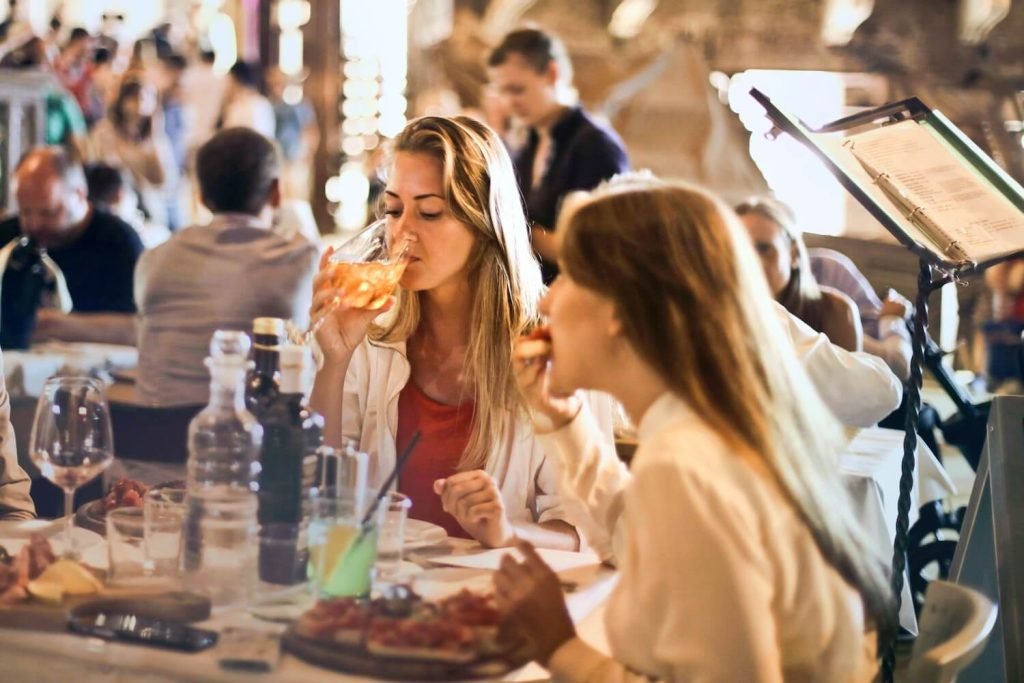In the realm of on-demand food delivery, Uber Eats has claimed its place as a key player. It’s a quick, efficient service that brings your favorite foods right to your doorstep. But when you examine the bill, a nagging question arises: “Why is Uber Eats so expensive?” In this blog post, we delve into the thirteen reasons that contribute to the high cost. Let’s unravel this enigma one thread at a time.
Also Read: What time Does Ubereats Open?
A Well-Known Food Chain
Uber Eats, a subsidiary of the multinational ride-hailing company Uber, has rapidly transformed the landscape of food delivery. Launched in 2014, Uber Eats has found its way into the hearts (and stomachs) of people across the globe. Offering service in hundreds of cities worldwide, the platform connects hungry customers with a vast array of restaurants and cuisines. However, despite its convenience and efficiency, users often find themselves questioning, “Why is Uber Eats so expensive?”

Understanding the Business Model
Uber Eats operates as a middleman, connecting restaurants with customers who desire a piping-hot meal without stepping foot outside their homes. The application-based platform takes a percentage from every order as its commission. Additionally, delivery fees, surge pricing, and tips for drivers play into the overall price. All these factors combined can result in your meal costing significantly more than it would if you ordered directly from the restaurant.
13 Reasons Why Uber Eats is So Expensive
Reason 1: High Commission Rates
The Impact on the Final Bill
One major reason for the hefty cost of Uber Eats is the commission rates charged to partner restaurants. Uber Eats typically charges restaurants a commission of around 15% to 30% per order. These high commission rates invariably get passed on to customers in the form of increased menu prices.
The Double-Edged Sword of Commission
From the restaurant’s perspective, partnering with Uber Eats can be a double-edged sword. While it helps increase their reach and revenue, the high commission charges eat into their profit margins. Therefore, to maintain profitability, many restaurants hike their prices on the app, which directly impacts the customers’ pockets.
Reason 2: Delivery Fees
Setting the Stage for Added Costs
Another significant contributor to the high costs is the delivery fee. Uber Eats charges a delivery fee for each order, which varies based on factors like distance, availability of drivers, and demand.
The Variable Nature of Delivery Fees
These delivery fees aren’t constant and can fluctuate based on surge times, akin to Uber’s ride-hailing service. During peak hours or bad weather, the delivery charges can skyrocket, making your meal much more expensive.
Reason 3: Small Order Fee
The Hidden Costs in Your Bill
Have you ever noticed an extra fee when you order just a cup of coffee or a small snack? This is what Uber Eats calls the “Small Order Fee”. If your order doesn’t reach a certain minimum value, Uber Eats charges this extra fee. It serves as a deterrent for very small orders that aren’t as profitable for the platform.
Balancing Profitability
By adding a small order fee, Uber Eats ensures that all deliveries made are worthwhile in terms of profitability. However, this further drives up the cost for customers who just want a small bite to eat or a quick pick-me-up.
Reason 4: Surge Pricing
Navigating Peak Times
Surge pricing is another factor that influences the high cost of Uber Eats. Similar to the parent Uber ride-hailing model, Uber Eats uses dynamic pricing. This means that during high demand periods or in busy areas, prices can go up significantly.
The Double Whammy of Surge Pricing
The surge pricing doesn’t only apply to delivery fees but can also affect the prices of the food items. When demand outstrips supply, Uber Eats can raise the prices to balance the equation. Consequently, you might end up paying a lot more for your food during peak dining hours.
Reason 5: Driver’s Tips
The Cultural Expectation
In many cultures, tipping the delivery person is considered a standard practice. Uber Eats includes a feature that allows customers to tip their drivers right from the app. While it’s an optional charge, most customers opt to tip, adding to the total cost of the order.
The Human Element
Remember that drivers are integral to the functioning of Uber Eats. They are the ones braving traffic and weather conditions to deliver your food hot and on time. The tips provide a supplementary income to these drivers, but they also make your food delivery more expensive.
Reason 6: Operational Costs
The Price of Running a Business
Running an operation as extensive and complex as Uber Eats is expensive. The costs of technology, app maintenance, customer support, marketing, and the logistics network all contribute to the operational costs.
Costs Behind the Scenes
These costs are less visible to customers but play a substantial role in shaping the final bill. Maintaining an easy-to-use app, providing prompt customer service, and ensuring efficient delivery requires significant investment. These operational costs, in turn, contribute to why Uber Eats can be so pricey.
Reason 7: Packaging and Handling Charges
The Unsung Heroes of Delivery
Packaging is crucial for maintaining the quality and temperature of the food during delivery. Good packaging prevents spillage and ensures you receive your food in optimal condition. However, the costs of such packaging often get added to the bill, increasing the total amount you pay.
Ensuring Quality Delivery
Moreover, handling charges also add to the cost. These cover the cost of carefully preparing and packaging the food for delivery. Although these charges are relatively small, they add up and contribute to the overall cost of using Uber Eats.
Reason 8: High Demand and Low Supply
The Economics of Food Delivery
The basic principles of supply and demand also apply to Uber Eats. In areas where the demand for food delivery is high, but there aren’t enough partner restaurants or drivers, prices may rise. This helps to regulate demand and ensure that the service remains operational.
The Price of Convenience
High demand also reflects the value that customers place on the convenience of having food delivered to their doorstep. As with any service, the more in demand it is, the more you can expect to pay for it.
Reason 9: Promotions and Discounts
The Illusion of Savings
While promotions and discounts might initially seem like a way to save money, they can sometimes lead to higher spending. “Spend more to save more” deals can encourage customers to order more food than they initially intended, thereby spending more overall.
Reading Between the Lines
Promotional deals are also often limited to specific restaurants or items. This can lead customers to order from more expensive establishments or choose pricier dishes to avail the discount, thus spending more than they would have otherwise.
Reason 10: Taxes and Regulatory Costs
The Role of the Government
Governments may impose taxes and regulatory costs on food delivery services like Uber Eats. These costs are often passed on to the customer and included in the final bill, adding to the cost of the service.
The Variability of Taxes
The specific taxes and the extent to which they affect the total cost can vary widely depending on the location. In some places, these costs may be relatively minor, while in others, they can add significantly to the cost.
Reason 11: The “Busy Area Fee”
Paying for Popularity
Uber Eats applies a “busy area fee” when ordering from restaurants in particularly busy areas. This additional fee helps manage the demand and ensure that everyone in the area can get their food in a reasonable timeframe.
The Price of Popularity
While it’s convenient to have access to popular restaurants, this convenience comes at a cost. The busy area fee contributes to the higher cost of using Uber Eats, particularly in densely populated or high-demand areas.
Reason 12: Convenience and Time Savings
The Luxury of Time
One of the significant benefits of using Uber Eats is the convenience and time savings it provides. However, as with most conveniences, there is a cost attached to it. You’re not only paying for the food but also the luxury of having it delivered to your door.
The Opportunity Cost
By using Uber Eats, you’re freeing up time that you would otherwise spend shopping for groceries, cooking, or going out to a restaurant. This time can be used for other activities, but it comes with an associated cost.
Reason 13: Expansion and Growth
The Price of Growth
As Uber Eats continues to grow and expand into new markets, there are associated costs. These can include marketing and promotion, partnerships with new restaurants, and recruitment and training of new drivers.
Building for the Future
These expansion costs are an investment in the platform’s future growth. However, they do contribute to the current high cost of using the service.
FAQs
1. Why does the price of the same meal vary on Uber Eats compared to ordering directly from the restaurant?
This can be due to several factors, including the commission Uber Eats charges the restaurant, added delivery fees, and dynamic pricing during high-demand periods.
2. Can I avoid paying the small order fee on Uber Eats?
Yes, you can avoid the small order fee by ensuring your order value is above the minimum threshold set by Uber Eats.
3. How can I save money on Uber Eats?
Look for promotions and discounts, order during off-peak times to avoid surge pricing, and consider picking up your order to save on delivery fees.
4. Why am I charged more for delivery during certain times?
Uber Eats uses dynamic pricing, which means delivery charges can increase during peak hours or periods of high demand.
5. What is the busy area fee on Uber Eats?
The busy area fee is an additional charge when you order from restaurants in high-demand areas. It helps manage demand and ensures that the service remains operational.
6. Does tipping the driver make my Uber Eats order more expensive?
Yes, while tipping is optional, it does add to the total cost of your order.
Conclusion
Uber Eats offers a level of convenience and variety that is hard to match. But with convenience comes cost. By understanding the factors contributing to the high cost of Uber Eats, you can make more informed decisions and potentially find ways to save. Keep in mind that while it might be more expensive than cooking at home or picking up a meal yourself, the time and effort you save might just be worth it.


